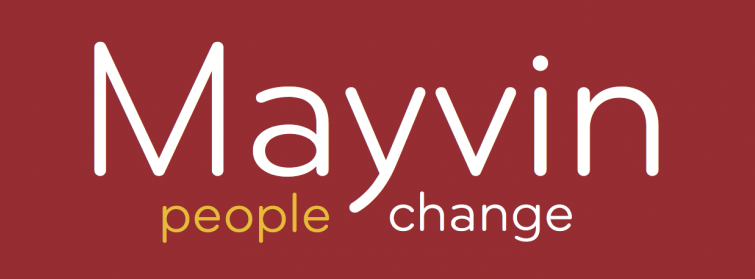We have been reading, writing and talking for a little over a year now about different elements of 21st Century Leadership (C21L).
Over the last few weeks, my experience has been of a number of elements suddenly dropping into place. It’s as if the story has suddenly become clear.
So, here goes: 21st Century Leadership – the story so far…
Whatever you read or follow, it seems pretty clear that the world is becoming less stable, faster-moving, more dynamic, less predictable. We see this all around us in world events and this creates very real ripples for us in our everyday lives.
This has profound implications for how we run our organisations and our lives. Traditional planning approaches assume the world is predictable - that a given cause will result in a (reasonably) knowable effect, where uncertainty and risk can mostly be managed. A Newtonian mindset, if you will. Increasingly, these approaches are being found wanting - the world seems just too complex, iterative and therefore unknowable.
Complexity
Enter ideas from Quantum Physics, and mathematical chaos and complexity. In this mindset, organisations operate more like a flock of birds than a machine, and this has profound implications for leadership and organisational development.
Think of the ‘murmuration’ of starlings in this wonderful two-minute movie as a metaphor for an organisation and then imagine trying to lead it using conventional planning, command and control.
(Note that in my view, simply corralling the birds and forcing them to go into a particular direction is not leading. It is coercing. Were we to use this approach, we’d end up with something very different from the beautiful natural display in the movie.)
Many (myself included) find these 'complexity-based’ ideas very appealing. The problem is they mostly operate at a theoretical level, and don’t offer much in the way of tangible practices for the person wanting to know what they should actually be doing when they get back to the office.
Finding your own way forward
This is partly in the nature of the 'complexity’ mindset, one of the principles of which is that, 'what we should do when we get back to the office’ is always going to depend on the context.
In practice though, this means that people need to find their own way forward, which can be unhelpful to those looking for help and guidance.
As those of us in Mayvin have pondered issues such as these, we have found ourselves wondering whether part of the answer lies in organisations and their leaders finding a way to do simultaneously two things that are generally regarded as being in tension.
Unleashing potential
The first of these is to unleash the innate energy of people in an organisation - their intrinsic motivation, their commitment, their creativity. (In the case of the starlings film, it is the sheer energy of the birds that 'powers’ those amazing shapes and forms and creates the palpable sense of wonder that is conveyed.
At the same time, however, organisations and their leaders need to channel and contain that energy, so that it is used in service of the organisation’s mission and goals. (In the case of the starlings, if there were no containment, the birds would all be off doing their own thing.)
Energy and containment in organisational life
In our experience, organisational life tends to cause us to act as if we have to choose between energy or containment. The logic of this mindset goes something like this. “If we empower people, we lose control over them. If we try and control them too much we demotivate them.” By contrast, we think that successful 21st century leaders are finding ways to both of these things in their organisation at the same time.
So, as of now at least, part of our answer to the question, 'what is 21st Century leadership’ is that it is the capacity simultaneously to unleash energy and provide containment. This is something we are hoping to test and learn more about during our Action Research programme being developed with TJ.
What might this look like in practice?
Again, this remains work in progress, but our view is that some of the practices are around stories, narratives and networking.
We are developing a process called the 'Mayvin Game’ to start playing with these ideas in order to develop them. And another question: what are the capacities and skills of 21st Century leadership?
Our initial ideas are summarised in a series of short pieces on our website that we wrote last year, and they fall under five headings:
- Collective Intelligence
- The Networked Leader
- Wisdom from multiple intelligences
- The Enabling Truth
- Meaning and Purpose
What do we mean by these things? Take a look at the blogs and articles and see what you think.
Postscript
So that’s where we’ve got to – a rare moment of clarity. Now I am someone who likes to be standing on reasonably solid ground before taking the next step, so this feels like a nice place to be. It’s seductive of course – the risk is that in my relief at having finally 'made progress’, I might cling too tightly to my new-found clarity, and in so doing, lock it down into some dogma.
The kind of “I’ve got the answer, you haven’t” orthodoxy that can feel good, looks good (to many), sells consultancy days, but gets in the way of learning new things.
So even as I offer these thoughts, I need to remind myself that they are unfinished and to offer them tentatively, with the cement still soft (always soft, even). It’s an interesting tension to hold because also I want to offer something that is clear, coherent, compelling even. It strikes me that this is a rather “21st Century Leadership-esque” dilemma.
In fact, even as I finish this postscript, I am starting to wonder if it will actually end up as the most useful part of this blog post. Why? Because it is only this section that offers real clues as to what a leader (ie myself) should be actually doing ‘back at the office’, given my own specific context.
Our next level of focus and inquiry is going to be on the practices of 21st Century Leadership – more on what 21st leadership actually looks like in practice.
Catherine Howe, in her recent blog post on our site, wrote about how she used the act of blogging as a way of making a public commitment to something, and thus holding herself to account.
In much the same spirit, please treat this blog post as a public commitment to pursuing that next level of inquiry. We’ll be happy to let you know what we find.

